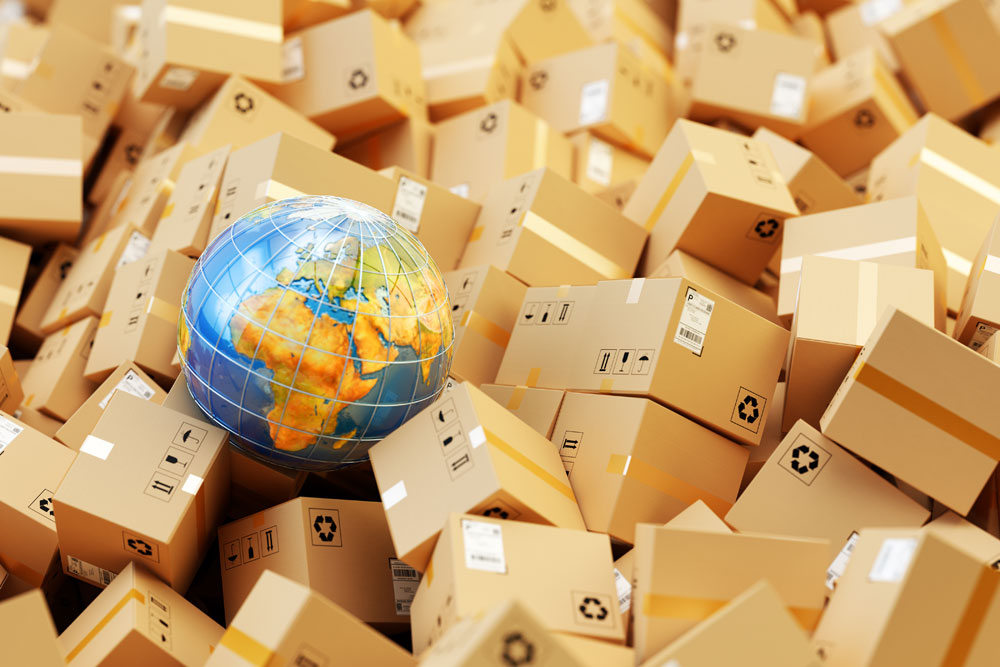Product manufacturers, large and small, have to deal with a global supply chain when working with retailers. This blog post talks in detail about 6 time-tested tips for shipping products internationally that all product manufacturers should think about.
In most cases, if your product is manufactured in China, then its most likely to be shipped globally from a warehouse in China or Hong Kong. Because of COVID-19, the global supply chains will probably be reconfigured, and companies will have to think of manufacturing closer to home. Here are 6 tips to think about in regards to shipping products around the globe:
1. Global product shipping: Product manufacturers spend a lot of time on product development, manufacturing, marketing, advertising, and fundraising. Things such as shipping and warehousing take a backseat and are not considered that glamorous. However, not taking proper shipping costs into account can lead to huge losses on what would have otherwise been a profitable product. Owners should aim the calculate the “total landed cost” i.e., the total cost to deliver the product to a customer including shipping, duties etc.
Owners need to accurately calculate their shipping costs for the product they are offering before they start selling it. To accurately calculate shipping costs, owners need to look at the product weight and final box dimensions before shipping the product. The actual product sales price also determines the shipping method used. For example, if you are selling a $200 product, then customers do not mind paying $20 for an air shipment from say, China to the US. However, if you are selling only a $20 product, then customers will complain about $20 air shipping cost and you need to look at other cheaper options. Using a cheaper option means more time in transit.
Doing upfront due diligence and coming up with an accurate shipping cost, shipping options (air versus ocean), shipping carriers (DHL versus FedEx etc.) for different countries can save potential headaches down the line.
2. Dimensional weight in shipping: Dimensional weight or DIM weight comes into play when you ship large products. The basic concept is that the shipping company will charge you for the total size of the product instead of the weight of the product. A DIM weight factor is used to calculate the dimensional weight.
For example, if you are shipping a large, pre-assembled piece of furniture, you will most likely be paying DIM weight instead of the regular weight. DIM weight can be anywhere from 2x – 10x of the actual product weight and this can lead to astronomical shipping charges and huge losses for the company. Owners need to work up front with the shipping company to accurately calculate the DIM weight and the DIM factor used. The higher the DIM factor that you negotiate with the shipping company, the lower shipping charges you must pay.
3.Customs duties: In addition to shipping, product manufacturers should consider customs duties and tax considerations. It is important to note that taxes are different from duties and are discussed in the next section.
Each country has its own tariff and duty obligations, with different rates, rules, and forms. For example, a leather handbag might have only a 5% import duty in the United States, but it might have a 30% import duty in Japan. In addition, because of the latest Trump tariffs, most of the products imported into the United States have to pay an extra 25% import tariffs.
Owners have two options here. Either they can deliver the product to the customer where all the duties, taxes and shipping are paid upfront, and the customer just receives the product at the doorstep. This is called the total landed cost solution and leads to a good customer experience.
Total landed cost is calculated by taking every factor into account. These are things such the order value, shipping costs, cargo insurance costs, and all duties and taxes.
The other option is to let the international customer pay for import duties and taxes. When this happens, the customer will get a note from the post office saying that they have to come to the post office to pay the taxes and duties and then get the product released. This can lead to a bad customer experience. It is important that the retailer decide the shipping strategy upfront and convey that to customers right at the onset.
Retailers are strongly encouraged to not deliberately undervalue product value, or declare one type of item as another in order to avoid paying a higher duty rate. There is an extremely high chance that customs will find this out sooner or later and you would be subject to very heavy penalties and fines.
4. Taxes: In addition to customs duties, a lot of countries enforce an import tax called VAT or GST. VAT and GST are similar in terms of the tax concept. US is one of the few countries that does not have VAT or GST and a lot of retail owners assume that other countries are the same. This assumption can lead to costly tax implications.
In addition, people use customs duties and taxes interchangeably, but they are two different items. Customs duties vary based on product characteristics, but VAT/GST tax rates are fixed and are calculated on the total value of the product imported into the country. The UK has a VAT rate of 20% and Australia has a GST rate of 10%.
You have to clarify to your customers upfront whether you would be responsible for VAT/GST using the landed cost solution or you will let the customer pay these taxes. For example, if a customer in the UK assumes that the shipping includes the 20% VAT and you had not figured that in, then you would have a 20% hit on your profit margins.
5. Product labeling and regulatory compliance: Even after correctly figuring out the shipping, duties and taxes, owners have another thing to take care of. Different countries have different regulatory and labeling requirements. For example, Canada wants everything labeled in both French and English. In addition, child products might require special safety labeling in different countries. Electronics telecommunications products might require certifications such as FCC, Bluetooth in the US, and the CE certification in the European Union.
While it might become a nightmare for retailers to take care of regulatory compliance in every individual country where they have customers, it is important to get the certification for at least US and Europe. US and Europe have very tight standards, and these might be used in other countries. Without the appropriate labeling and certification, the customs authorities in the destination country might not let you import the product.
6: Trying to do everything yourself
All the above-mentioned items might sound a bit intimidating and out of your comfort zone, so it is better to let the experts handle these things.
This guest blog post was written by Munish Gupta, CEO of Supply Chain Advisory Group. Mr Gupta can help you with all of the above-mentioned things and much more.
Mr. Gupta is a Wharton MBA/UCLA electrical engineer with over 20 years of experience in international trade. He guides clients with “end to end” services such as international entity set up (taxation, VAT, payroll etc.) regulatory compliance, customs clearance, transfer pricing, freight forwarding (ocean/air/truck/parcel freight), & overall global supply chain management. Mr. Gupta can be reached at 646-436-4133 or by email at munish@sc-advisory.com.



